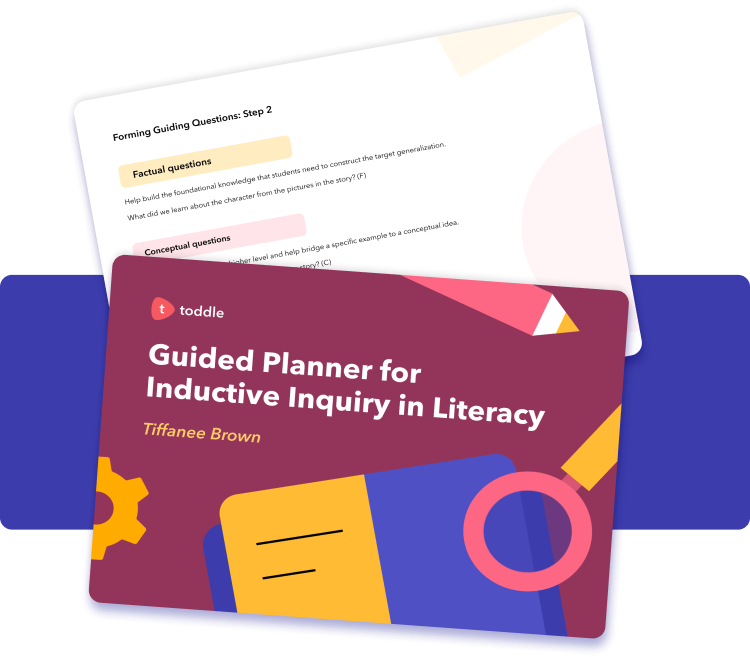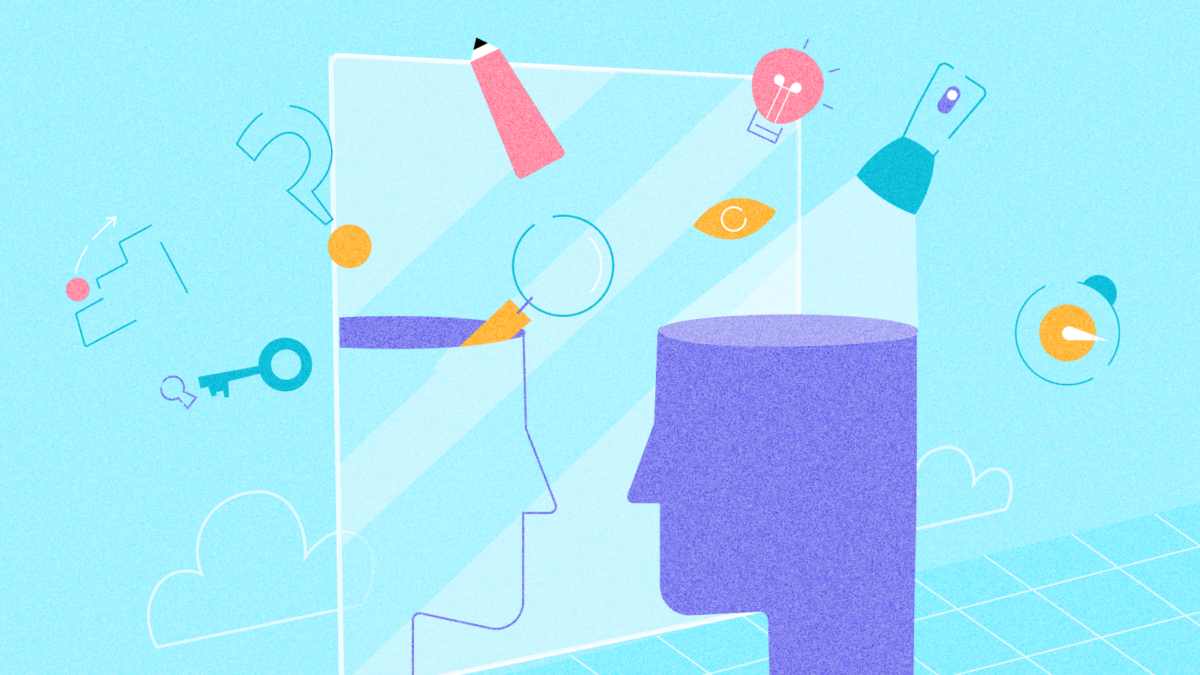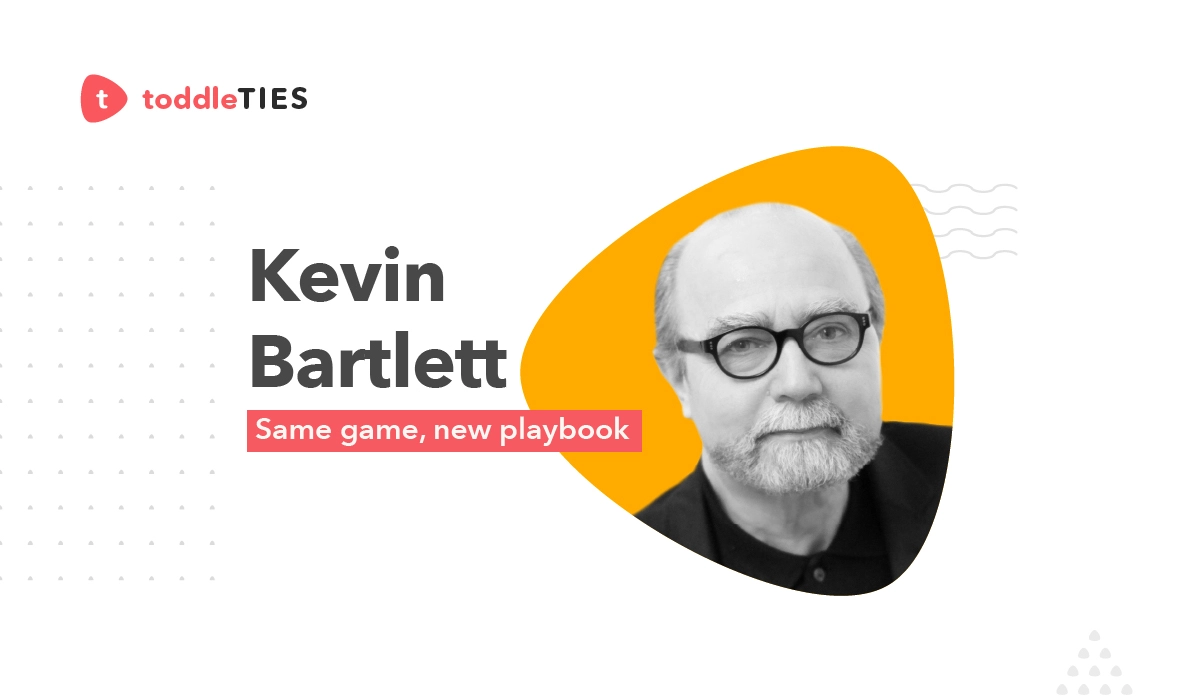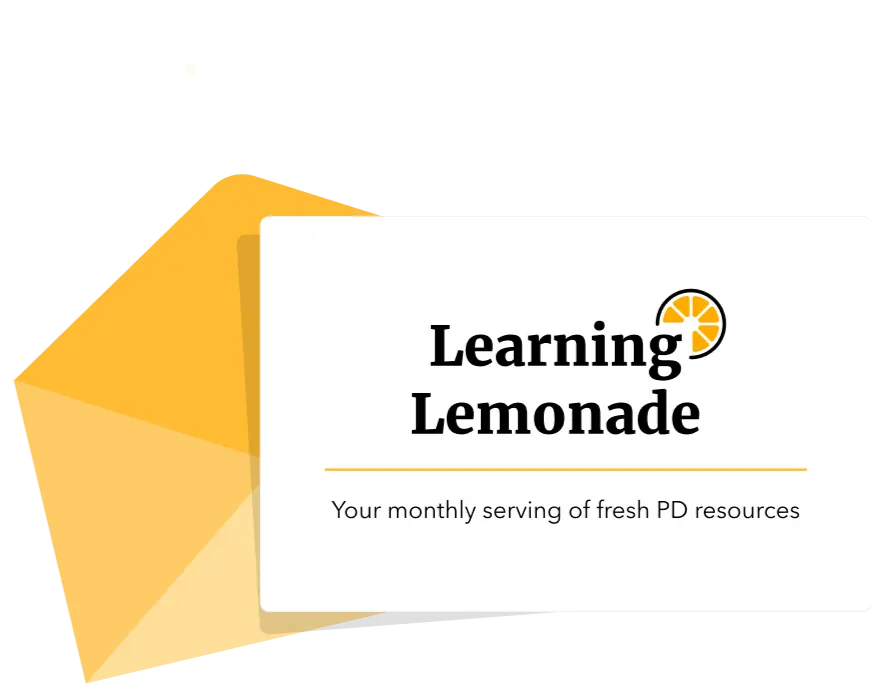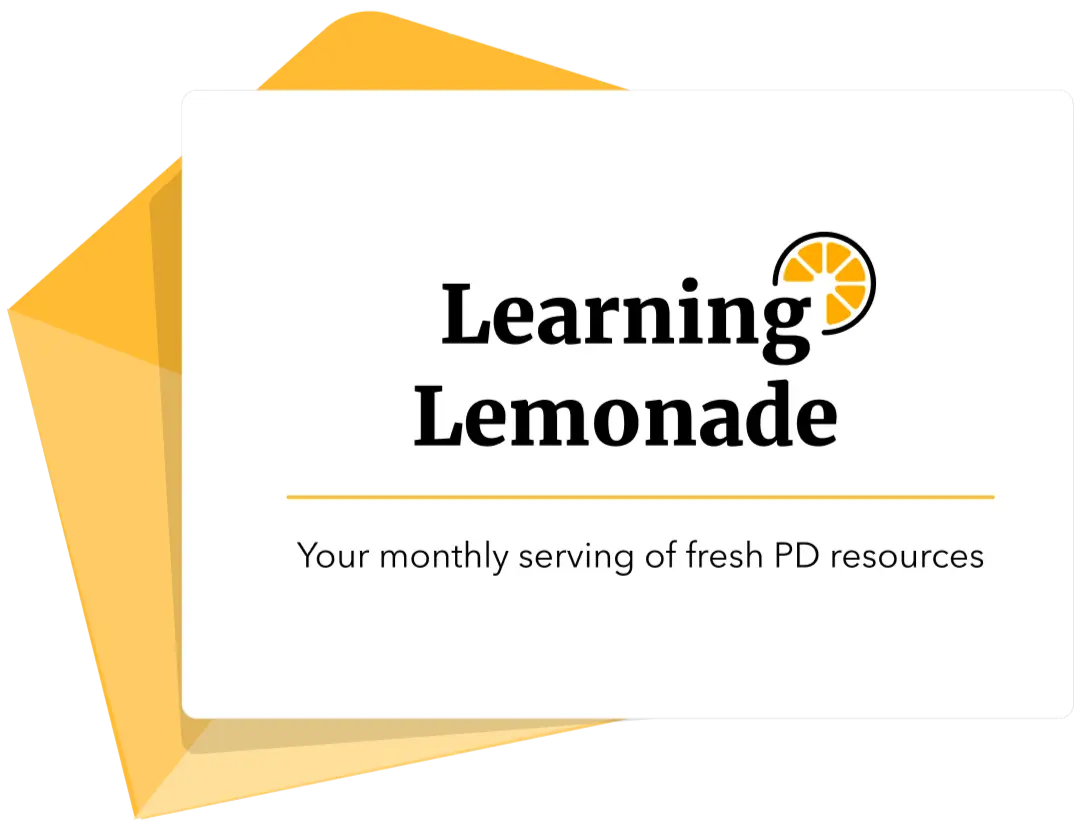The Flash Guide to Inductive Inquiry in Literacy
Moving beyond skills, conceptual understanding, and transfer
Practicing skills that are locked into a specific assignment does not necessarily lead to learning transfer — especially when the new context is unfamiliar and more complex.
In a concept-based literacy classroom, we teach literacy skills so that we intentionally develop a third dimension — students’ conceptual schemata. In other words, students learn and practice skills in contexts that support inquiry and exemplify the relationships among the specific skills and related concepts. Our goal is to go beyond facts and skills to include a focus on the transfer of the essential conceptual understandings of a discipline.
What separates three-dimensional literacy from other approaches is that teachers use clear, important, transferable conceptual understandings (generalizations) as specific targets of instruction and guide students to construct these understandings on their own. Generalizations give relevance to skills and support the retention and ownership of learning. By taking the time to articulate what we want students to understand and be able to transfer, we also take our thinking about how to teach complex skills one step further. This allows educators to better make conscious choices about literacy practices and resources that will deliberately guide students’ thinking toward important understandings about how language works.
Inductive learning design develops student intellect
Think about this, how often do we allow students to uncover why we do what we do as readers, writers, speakers, listeners or viewers without us just telling them? The power of inductive inquiry in a literacy classroom shouldn’t be underestimated. This approach places a high value on students’ intellect and invites students to take on the meaning-making in the lesson.

We can’t infuse brains with deep conceptual understanding. Just because we tell students a big idea, such as, “Writers craft precise images of people, places and events in a reader’s mind through specific details and word choice” does not mean that they actually understand it. Even if we follow it with several high-quality examples, students are accepting the idea as truth because their teacher told them it was so. When the generalization is shared at the onset of a lesson, it represents a deductive learning design. In deductive learning, students move from a general, abstract idea to specific, concrete examples. The teacher identifies the big idea and then provides students with examples to study or investigate. The investigation validates or confirms the teacher’s understanding that was shared at the onset of the lesson.
In an inductive inquiry-based experience, the process is reversed. Students use specific, concrete examples as the foundation to form a generalized, abstract idea. The teacher does not reveal the big idea. Rather, the teacher creates the conditions necessary for students to put the pieces together themselves. Students become responsible for their thinking!
In an inductive, inquiry-based learning experience, students:
- Investigate multiple examples for a specific purpose with a conceptual focus
- Draw out or identify concepts from the examples
- Collect evidence and notice patterns across examples (which will serve as support for the generalization)
- Build conceptual understanding that transfers either within the discipline or beyond the discipline
- State the understanding in their own words by completing the phrase, “As a result of this investigation, we/I understand that . . .”
The inductive learning in a literacy classroom visual shares a simple way to plan an inductive learning experience that considers the unique needs of literacy and language classrooms. From the student perspective, we read the visual below from the bottom up. From the teacher perspective, we read the visual from the top down.
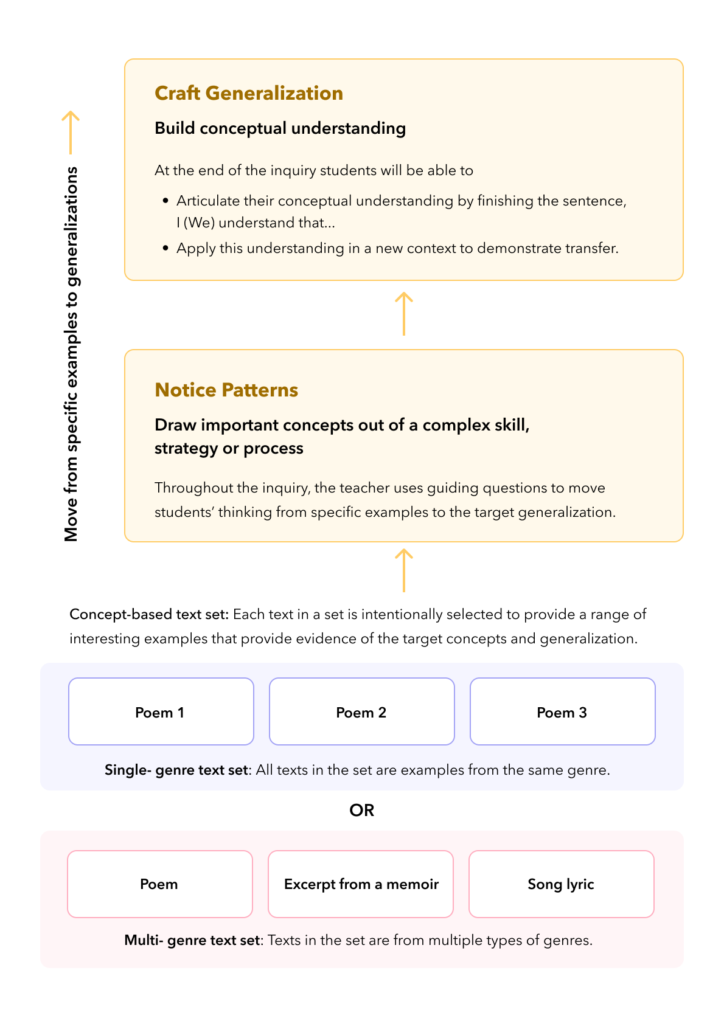
Designing an inductive literacy experience
Click on the tiles to explore each strategy



Let’s go back to the generalization shared earlier. In this example, the learning target for conceptual understanding is, “Writers craft precise images of people, places and events in a reader’s mind through specific details and word choice.” This generalization expresses an important transferable idea about being a reader and writer. Now take a peek at the Example of the Inductive Planning Process graphic. You’ll find the generalization at the top identified by Step 1. Again, our goal is that through inquiry, students will uncover this idea without the teacher telling them what it is! In an inductive learning experience, students take on the cognitive work and the meaning making process.
Guiding questions come in three types:
- Factual questions help build the foundational knowledge students need to construct the target generalization. They focus thinking on a particular point, and the answers provide substantiation for generalizations.
- Conceptual questions move student thinking to a higher level and help bridge a specific example to a conceptual idea. These questions ask about conceptual relationships, which force linking, and they require more sophisticated levels of cognitive processing and thinking. Conceptual questions are transferable across examples and situations.
- Debatable questions are not in every lesson, but they are used enough throughout the unit to keep students engaged and able to take a stand on an issue that has no right or wrong answer. Debatable questions require analysis and synthesis of different sources and perspectives.
Returning to the Example of the Inductive Planning Process, you can see a set of guiding questions that could be used to scaffold thinking toward the generalization that we set as the learning target.
In this example, did you notice the (F) or the (C) following the question? The (F) represents a factual question, and the (C) represents a conceptual question. These labels help to ensure that both types of questions are used intentionally.
Lanning (2013) reminds us that, “through inquiry-based, inductive teaching, we keep pressing students closer to constructing their understanding of the idea (generalization) through various lesson examples and questioning. Guiding questions create the bridge between learning experiences and deeper understandings.” The use of a graphic organizer can further scaffold student thinking. The 1st Grade and the 7th Grade examples to come to share two simple graphic organizers that can be adapted for many purposes.
- A single-genre text set allows students to go deep into one specific genre, such as poetry. All examples for the investigation would be drawn from poetry.
- A multi-genre text set allows students to notice patterns across different types of texts. For example, students might investigate an example drawn from a poem, an excerpt from a memoir, and song lyrics.
 The text-set, when paired strategically with the guiding questions, can gradually move student thinking beyond the concrete example to uncover abstract conceptual ideas. Here’s a helpful hint! As you consider which texts to use in the investigation, ask yourself these two questions:
The text-set, when paired strategically with the guiding questions, can gradually move student thinking beyond the concrete example to uncover abstract conceptual ideas. Here’s a helpful hint! As you consider which texts to use in the investigation, ask yourself these two questions:
- “If I want students to uncover the idea in the generalization, without telling them what it is, what texts would students need to interact with?”
- “Would students be able to respond to the guiding questions if _______ (text or resource) was featured in the investigation?”
Let’s look at a few examples!
Inductive inquiry example, Grade 1
As you look at this example, remember, the generalization is written for the teacher so that we have clarity about our learning target for conceptual understanding but the guiding questions are created for students. Guiding questions are written in student-friendly language. Also, notice how the factual questions tune students into the concepts in each text, while the final conceptual question invites students to notice patterns and generalize.
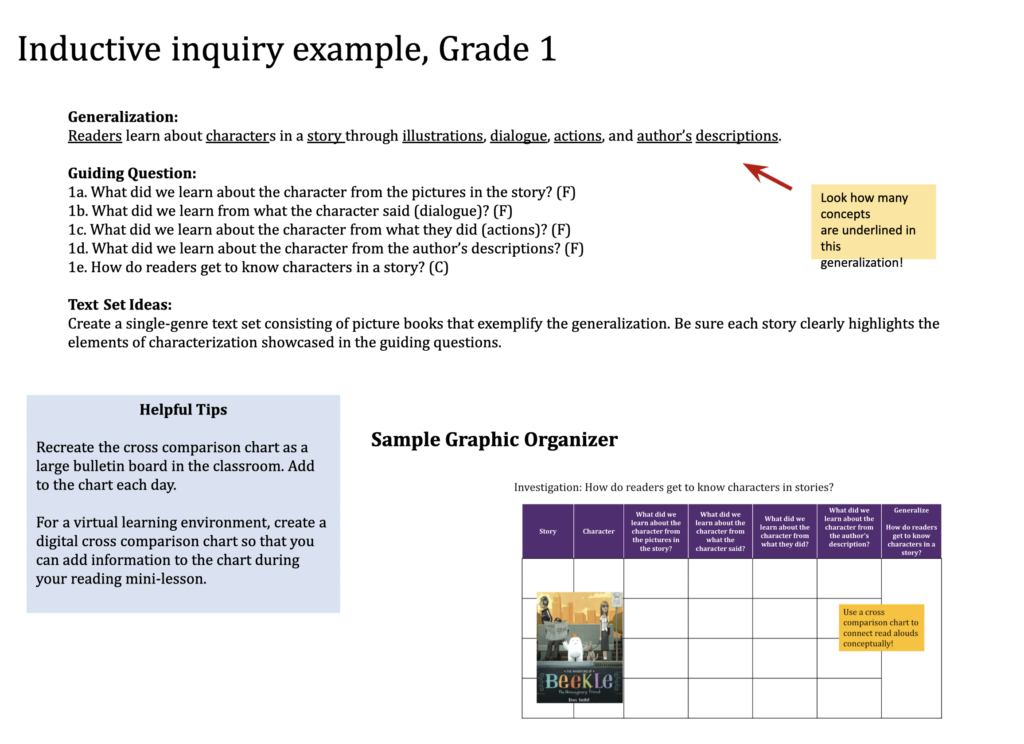
Inductive inquiry example, Grade 7
As you consider this example, pay attention to the increase in student ownership and the sophistication of the conceptual ideas between the grade 1 and the grade 7 examples. As students move through the grade levels, they have the opportunity to uncover increasingly nuanced and precise ideas about why we do what we do as readers, writers, speakers, listeners, and viewers which helps to develop disciplinary expertise.
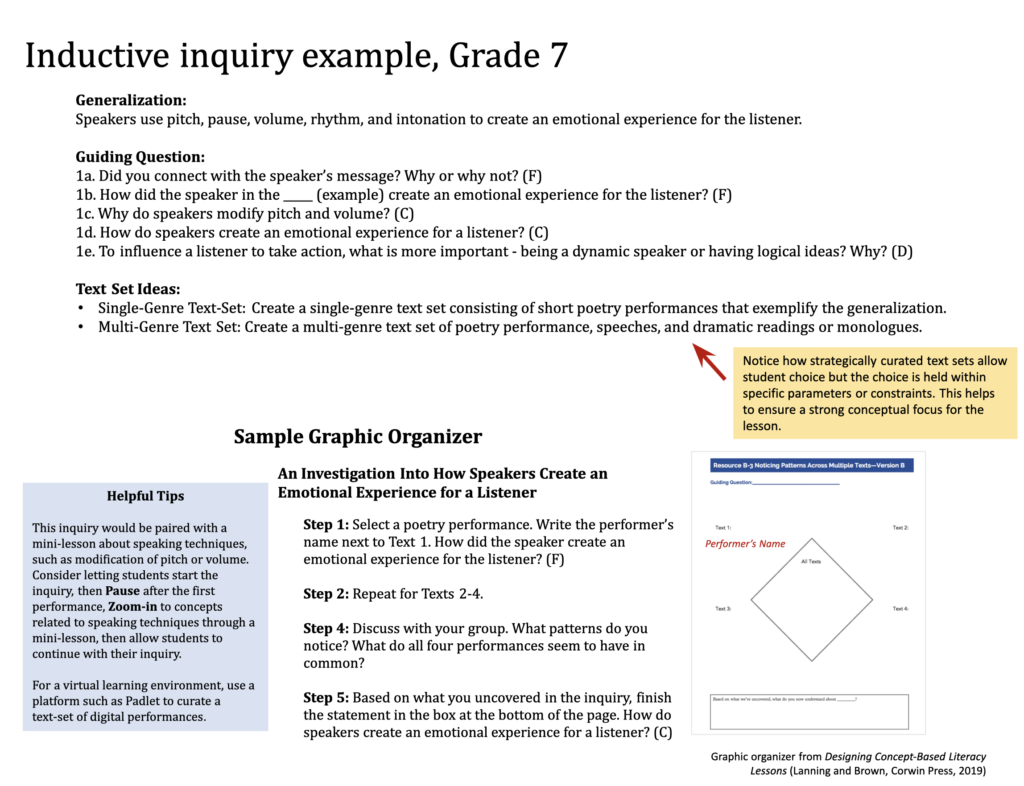
Inductive learning design is intentional
Inductive learning is not a free for all approach. Instead, the learning experiences are designed to deliberately and systematically develop students’ intellect and conceptual minds. We can’t assume fun or engaging instructional strategies will yield this outcome. Rather than students feeling they need to just “get through” each school assignment, they are far more engaged when the learning experiences require them to investigate concepts, facts, and skills in content that is generative, interesting, and thought-provoking.
We’re breaking away from the “coverage” model of using a bank of activities to teach facts and skills that are disconnected from a targeted conceptual understanding. This is accomplished by designing learning experiences with increasing complexity, which will require students to apply and synthesize facts and skills, look for patterns across examples, analyze concepts, and ultimately construct a generalization that expresses their conceptual understanding (Lanning and Brown, 2019).
A conceptual boost to literacy instruction
So to review, if you’d like to give your current literacy instruction a conceptual boost, first ask yourself, who’s doing the thinking in this lesson- the teacher or the students? If you find that the teacher holds the responsibility of the meaning-making, then consider the following tips to hand the thinking back over to the students.
- Ask yourself, “As a result of my instruction, what is the important conceptual understanding (generalization) that I want my students to understand and be able to transfer independently to new situations?” Deliberately writing the target generalization that can be used as an instructional target gives the lesson the essential, conceptual third dimension, which makes a difference in learning retention and transfer. Use the sentence frame, “Students will understand that…” to help you write your generalization.
- Craft a set of guiding questions to scaffold student thinking toward the realization of the generalization. The questions should serve as a bridge between the examples and the generalization.
- Provide multiple examples and text options to allow students to uncover conceptual patterns, and to promote student choice. Curate a single-genre or multi-genre text set that exemplifies the concepts under study.
- Create an investigation for students to analyze the text set, notice patterns, and express their new conceptual understanding. Be sure to ask students to reflect on the process they engaged in during the learning experience. Can students explain why they do what they do as readers, writers, speakers, listeners, and viewers?
Before telling students the big idea, tap into the power of curiosity and critical thinking. Encourage students to play with mentor texts, investigate examples, notice patterns across the examples, and articulate their own big ideas or generalizations about being a reader or writer. In doing so, we empower students to develop a deep, transferable conceptual understanding.



